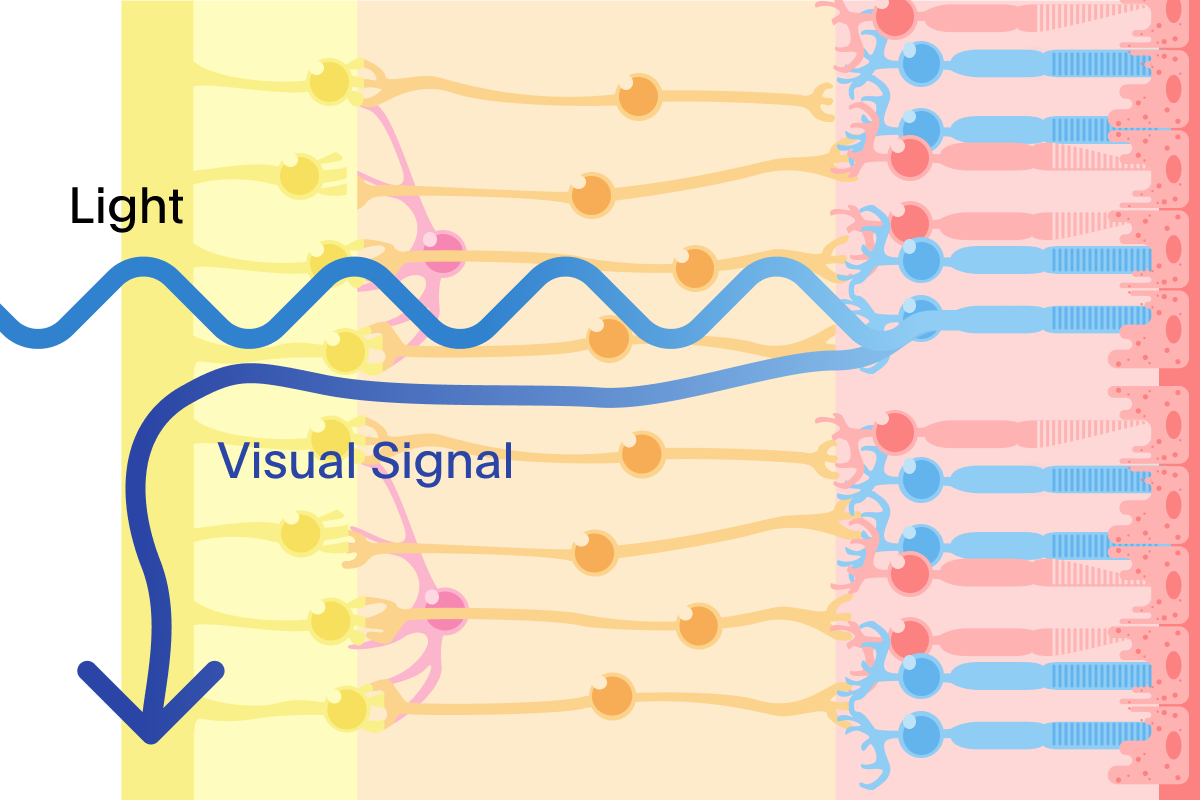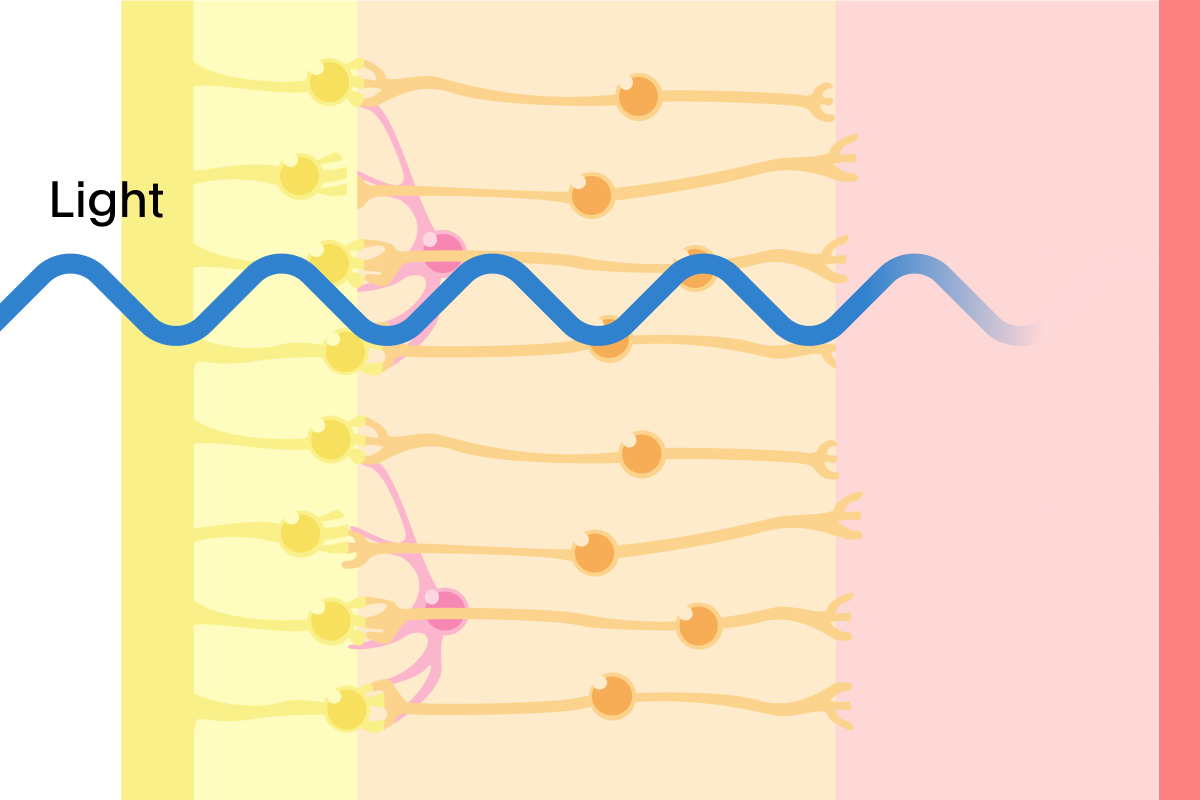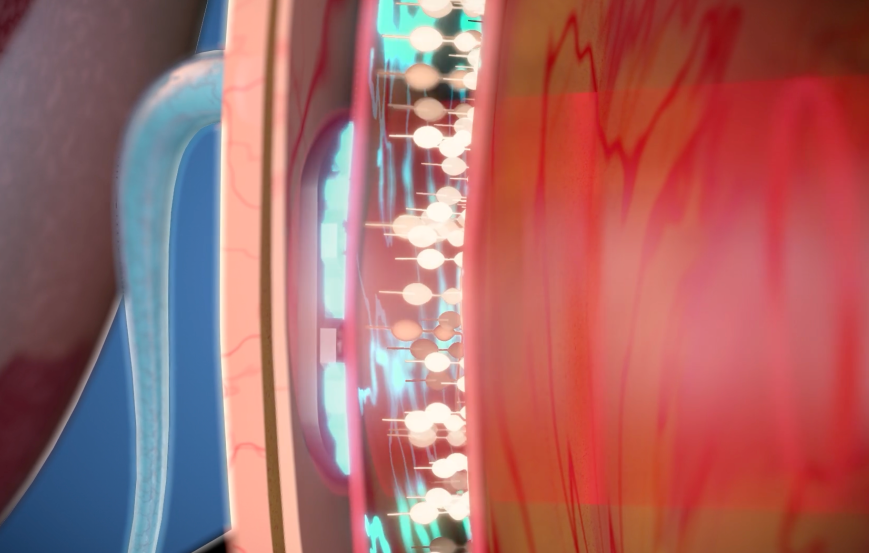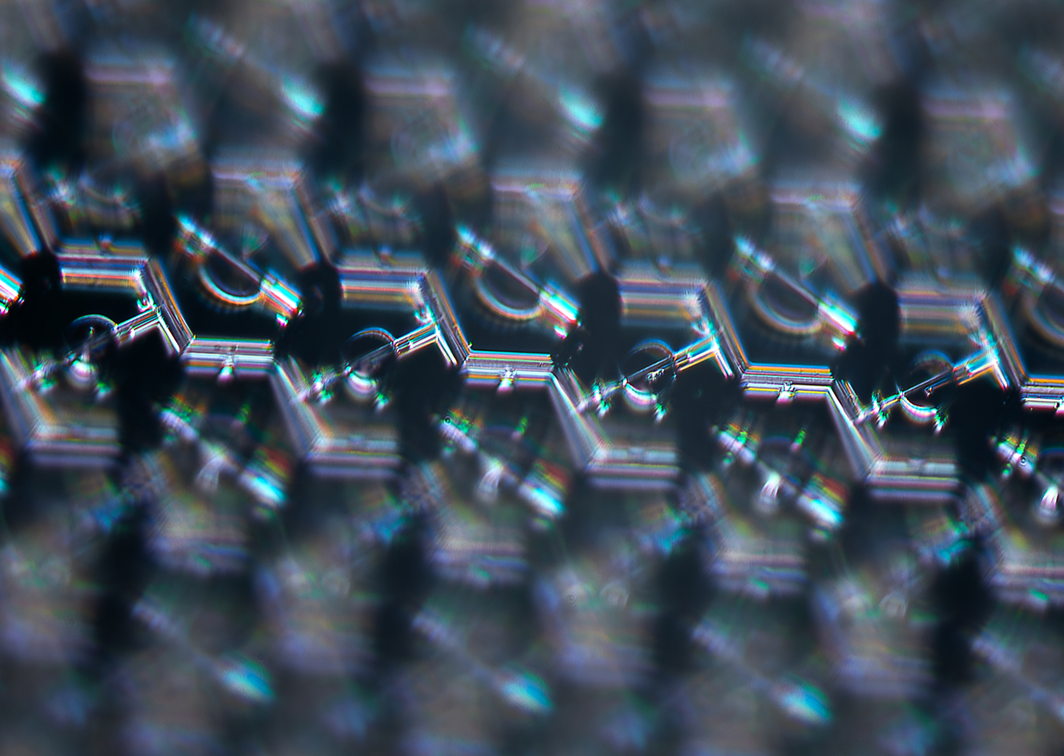Retinitis pigmentosa (RP) refers to a group of inherited diseases causing retinal degeneration and a loss of peripheral and night vision over time.
The vision loss is caused by a degeneration of the rod and cone cells in the retina resulting in a loss of peripheral and night vision that becomes more constricted over time, potentially resulting in total blindness in severe cases of RP. Dozens of different genetic mutations have been linked to RP.



Our Treatment: In clinical trials, PRIMA restored form vision in patients with Age Related Macular Degeneration (AMD) by replacing the function of damaged photoreceptors
Building on decades of pioneering research in miniaturized solar technology, the PRIMA system has two main parts: a small device placed under the retina where the eye's light-sensing cells have been lost; and a pair of glasses that sends both visual data and power in the form of patterned light that is projected on to the implant.
Once implanted, the PRIMA implant uses gentle electrical signals to activate healthy nerve cells in the eye. In our clinical trials for people with advanced atrophic dry age-related macular degeneration, this process enabled some patients to read sequences of letters with a clinically meaningful improvement of letter acuity.
Learn more about PRIMACurrent Status
Science's ongoing PRIMAvera clinical study in Europe is indicated for advanced atrophic dry age-related macular degeneration (GA) (NCT04676854). While we have not yet performed clinical studies with RP patients, in the future, our PRIMA system could help with central vision loss in very late stage RP and our optogenetic gene therapy could help with peripheral vision restoration.
Patient Registry: Science Corporation is actively seeking people interested in learning more about our vision loss treatments.
Join the Patient Registry
More Resources
More information about treatment options, disease details, and current research
